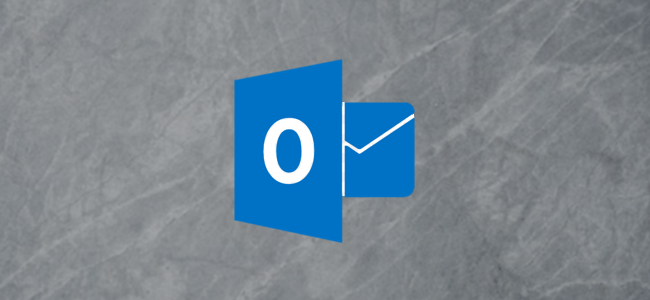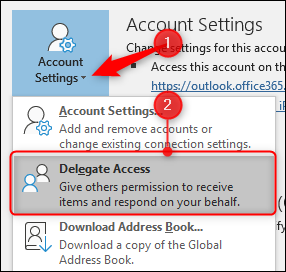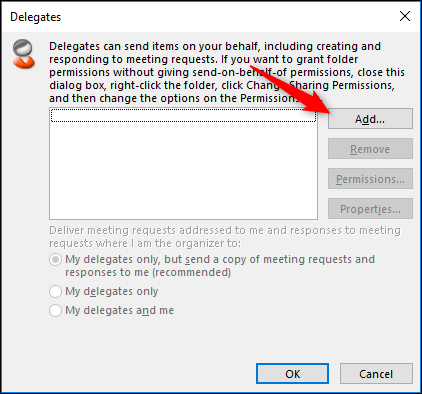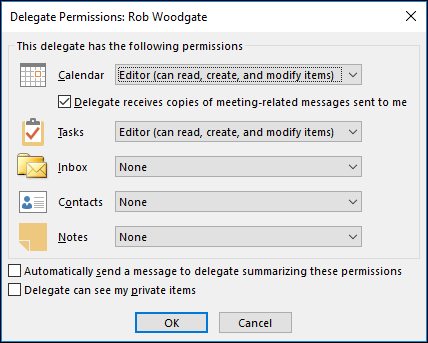It's common enough to share your calendar in Outlook, and in many companies, all Outlook calendars are visible to the whole office by default. But you can give someone a much higher level of visibility and control by delegating your account so they can create and respond to meetings and emails for you. Let's see how it works.
To delegate your mailbox to someone, click File > Account Settings and then click the "Delegate Access" command.
This opens the Delegates window, which will be empty the first time you open it. Click the "Add" button to set up a delegate.
This opens up the Global Address List (the list of all the people in your company), so you can choose a delegate. (You can't delegate your account to someone outside of your email domain, which means that if your email address is jane@mycompany.com, you can only delegate your mailbox to someone with an email address that ends "@mycompany.com.")
Select the person to whom you're delegating and then click "OK" to open up the Delegate Permissions.
The default permissions give the delegate Editor rights to your Calendar and Task list, but don't allow them any access to your Inbox, Contacts, or Notes. However, you can change the default permission for any of these categories. The options are:
- None: The delegate has no access.
- Reviewer: The delegate can read items, but not edit them.
- Author: The delegate can read and create items, and change and delete items that they create (such as meeting requests or tasks).
- Editor: The delegate can do everything that an Author can do and can also change and delete the items that you've created.
If you just want your delegate to manage your calendar (and tasks, which can be assigned to other people), then the default permissions will work fine. The "Delegate receives copies of meeting-related messages sent to me" option is switched on, so the delegate doesn't need access to your inbox. Meeting requests and responses are sent to them automatically when this is switched on.
Your delegate won't see any meetings or appointments that you've created and marked as private; they'll just see that there is a private appointment. If you want them to see (and edit) your private appointments, switch on the "Delegate can see my private items" option.
Finally, it's usually a good idea to switch on the "Automatically send a message to delegate summarizing these permissions" option, so that the delegate knows they've got permission to access your mailbox.
Click OK to return to the Delegates panel. The three options at the bottom that were grayed out before you added a delegate are now available.
The default option---meeting requests are sent to your delegates, and a copy is sent to you for reference---works for most people, but change to one of the other options if you want.
Once you click "OK" your delegate is added. They can now add your mailbox to their Outlook profile and access whatever you've let them access.





